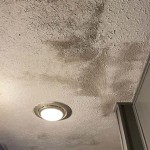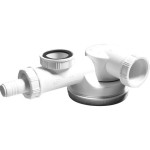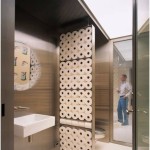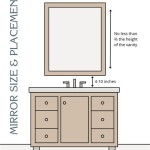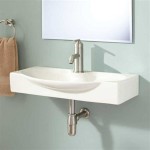Exposed Bathroom Sink: Design, Functionality, and Considerations
An exposed bathroom sink, also often referred to as an open vanity or console sink arrangement, presents a distinct departure from traditional enclosed vanity designs. Instead of concealing the plumbing and storage beneath the sink basin, this design choice prominently displays the pipes, support structure, and sometimes, even curated organizational elements. The appeal of an exposed bathroom sink lies in its aesthetic versatility, suitability for compact spaces, and potential for creating a visually lighter and more open bathroom environment. However, the decision to incorporate this type of sink requires careful consideration of factors such as plumbing aesthetics, storage needs, maintenance requirements, and overall design cohesiveness.
The increasing popularity of exposed bathroom sinks reflects broader trends in interior design that emphasize minimalism, industrial chic, and a celebration of functional elements. By deliberately revealing the infrastructure typically hidden from view, this sink style can introduce an element of visual interest and character to a bathroom. Furthermore, the open design can make smaller bathrooms feel more spacious and airy, particularly when paired with lighter colors and strategic lighting.
Aesthetic Considerations and Design Styles
The aesthetic impact of an exposed bathroom sink is significant, shaping the overall style and atmosphere of the bathroom. This design is not merely about exposing plumbing; it's about curating a visually appealing composition where functional elements become decorative features. The choice of materials, finishes, and the style of the supporting structure all contribute to the final aesthetic outcome.
One of the primary design considerations is the plumbing itself. Chrome or polished nickel are common and classic choices, offering a clean and reflective appearance. However, other finishes such as brushed brass, matte black, or even copper can be used to achieve a more contemporary or industrial look. The style of the pipes and fittings also plays a role. Simplistic, straight lines contribute to a minimalist aesthetic, while more ornate or curved fittings can evoke a vintage or traditional feel. The exposed pipes need to be professionally installed and aesthetically pleasing, free of leaks and corrosion.
The supporting structure of the sink is another crucial element. Console sinks, for instance, typically feature metal legs or a framework that supports the basin. These legs can range from simple, straight designs to more elaborate, decorative ones. The material and finish of the legs should complement the plumbing fixtures and the overall bathroom décor. Alternatively, some exposed sinks are supported by wall-mounted brackets, creating a floating effect that further enhances the sense of spaciousness. In either case, the structural integrity and stability of the support system are paramount.
Beyond the plumbing and support structure, accessory elements can further enhance the aesthetic appeal of an exposed bathroom sink. Open shelving beneath the sink can provide storage for towels, toiletries, or decorative items. These shelves can be made of wood, glass, metal, or other materials, depending on the desired style. The items displayed on the shelves should be carefully chosen and arranged to complement the overall design.
The exposed bathroom sink can work in a variety of design styles:
Minimalist: Clean lines, simple shapes, and a focus on functionality characterize the minimalist approach. Chrome or stainless steel plumbing fixtures and a simple metal frame support often complement this style.
Industrial: This style embraces raw materials and exposed elements. Black iron pipes, reclaimed wood shelves, and a utilitarian aesthetic are common features.
Vintage: Ornate plumbing fixtures, clawfoot legs, and a classic pedestal basin evoke a vintage feel. Antique brass or oil-rubbed bronze finishes can enhance this style.
Modern: Sleek, contemporary designs with geometric shapes and unconventional materials define the modern aesthetic. Wall-mounted sinks with hidden supports and integrated lighting can create a striking effect.
The key to successfully incorporating an exposed bathroom sink is to ensure that all elements work together harmoniously to create a cohesive and visually appealing design.
Functionality and Space Considerations
While the aesthetic appeal of an exposed bathroom sink is undeniable, its functionality and suitability for specific spaces are equally important considerations. The open design inherently affects storage options and spatial dynamics, requiring a thoughtful approach to bathroom organization and layout.
The primary functional difference between an exposed sink and a traditional vanity is the reduced storage space. While enclosed vanities provide ample storage behind closed doors and in drawers, exposed sinks offer limited or no concealed storage. This necessitates creative storage solutions elsewhere in the bathroom, such as wall-mounted cabinets, shelves, or freestanding storage units. The availability of alternative storage solutions is a critical factor in determining whether an exposed sink is a practical choice for a particular bathroom.
Open shelving beneath an exposed sink can provide some storage, but it requires careful organization and maintenance to keep the area looking tidy and uncluttered. Items stored on open shelves are always visible, so it’s essential to choose attractive containers and arrange them in a visually appealing manner. Rolling carts or baskets can also be used to organize items and make them easily accessible.
Exposed bathroom sinks excel in smaller bathrooms or powder rooms where space is at a premium. The open design creates a sense of spaciousness by allowing light to flow through and under the sink. This can make a small bathroom feel less cramped and more inviting. Wall-mounted sinks are particularly effective in maximizing floor space.
The accessibility of the plumbing is another functional consideration. Exposed pipes are easier to access for repairs and maintenance compared to concealed plumbing. This can simplify troubleshooting and reduce the cost of repairs. However, exposed pipes are also more vulnerable to damage and require regular cleaning to prevent corrosion and maintain their appearance.
Consider the overall layout of the bathroom when incorporating an exposed sink. Ensure that there is enough clearance around the sink for comfortable use and movement. Avoid placing the sink in a high-traffic area where it could be easily bumped or damaged. The placement of other fixtures, such as the toilet and shower, should also be considered to create a functional and aesthetically pleasing layout.
The choice of faucet is also functionally important. Taller faucet styles typically work better with vessel or above-counter sinks. Standard height faucets work well with sinks where the faucet is built into the sink or mounted directly behind it on the counter. The reach of the faucet should be adequate to allow comfortable hand washing without splashing.
Maintenance and Practical Considerations
Maintaining an exposed bathroom sink requires a proactive approach to cleaning and addressing potential plumbing issues. Unlike enclosed vanities, where dirt and leaks can remain hidden, exposed elements necessitate regular upkeep to ensure both aesthetic appeal and functional integrity.
The plumbing fixtures are the most critical component requiring regular cleaning. Water spots, soap scum, and mineral deposits can accumulate on exposed pipes and fittings, detracting from their appearance. Cleaning these fixtures regularly with a mild detergent and a soft cloth can help prevent buildup and maintain their shine. For more stubborn stains, specialized metal cleaners may be necessary, but always follow the manufacturer's instructions to avoid damaging the finish.
The area around the sink, including the floor and walls, should also be kept clean and dry. Water splashes and spills can damage flooring and lead to mold or mildew growth. Using a splash guard or towel to wipe up spills immediately can help prevent these problems. Regularly cleaning the floor around the sink can also help prevent the accumulation of dirt and debris.
Rust is an issue that can affect exposed pipes, especially those made of iron or steel. Applying a rust inhibitor or sealant to the pipes can help prevent corrosion. If rust does occur, it should be removed promptly with a wire brush or sandpaper, and the area should be treated with a rust-resistant primer before being painted or sealed.
Pay attention to potential leaks in the plumbing connections. Regularly inspect the pipes and fittings for signs of leaks, such as water droplets or dampness. Addressing leaks promptly can prevent water damage and costly repairs. If a leak is detected, it’s important to tighten the connections or replace any damaged parts immediately.
Evaluate the surrounding bathroom climate. High humidity can accelerate corrosion and damage to exposed materials. Ensure adequate ventilation in the bathroom to reduce humidity levels. Using a dehumidifier can also help control humidity in particularly damp environments.
Consider the durability of materials when selecting components for an exposed bathroom sink. Choose high-quality plumbing fixtures and support structures that are designed to withstand regular use and exposure to water and cleaning products. Select materials that are resistant to corrosion, rust, and water damage.
Finally, be mindful of the visual impact of the exposed plumbing. While the design is intended to showcase functional elements, it's still important to maintain a tidy and organized appearance. Keep the area under the sink free of clutter and avoid storing items that are unsightly or could potentially damage the plumbing.

Unexpected Beauty Exposed Plumbing Inview

Sink Pipes Worth Seeing

Bathroom Details Show Off Your Sink Line

Athena Modern Exposed Marble With Brushed Gold Freestanding Console Ba Sani

Unexpected Beauty Exposed Plumbing Inview

Athena Modern Exposed Marble With Brushed Gold Freestanding Console Ba Sani

Concrete And Hardwood Floating Exposed Aggregate

8 Bathroom Vanity Style Ideas Sweeten Com

36 Best Exposed Plumbing Bathroom Ideas House Design

Creative Ways To Utilise The Under Sink Areas In Your Bathroom And Kitchen Hipcouch Complete Interiors Furniture
Related Posts
